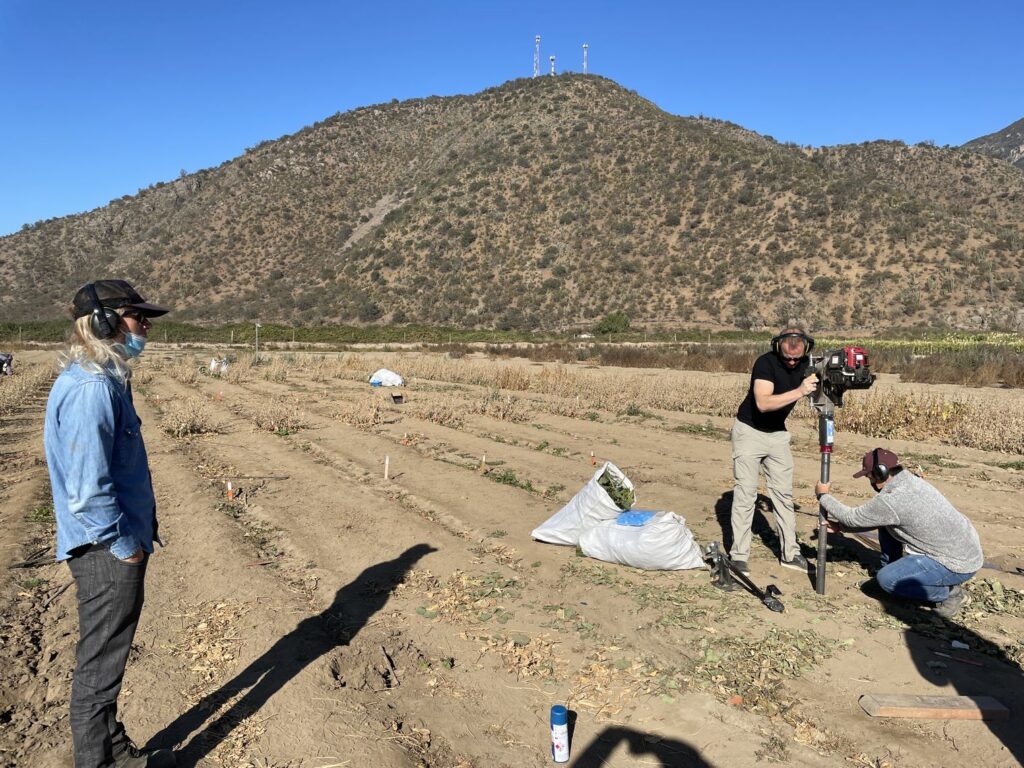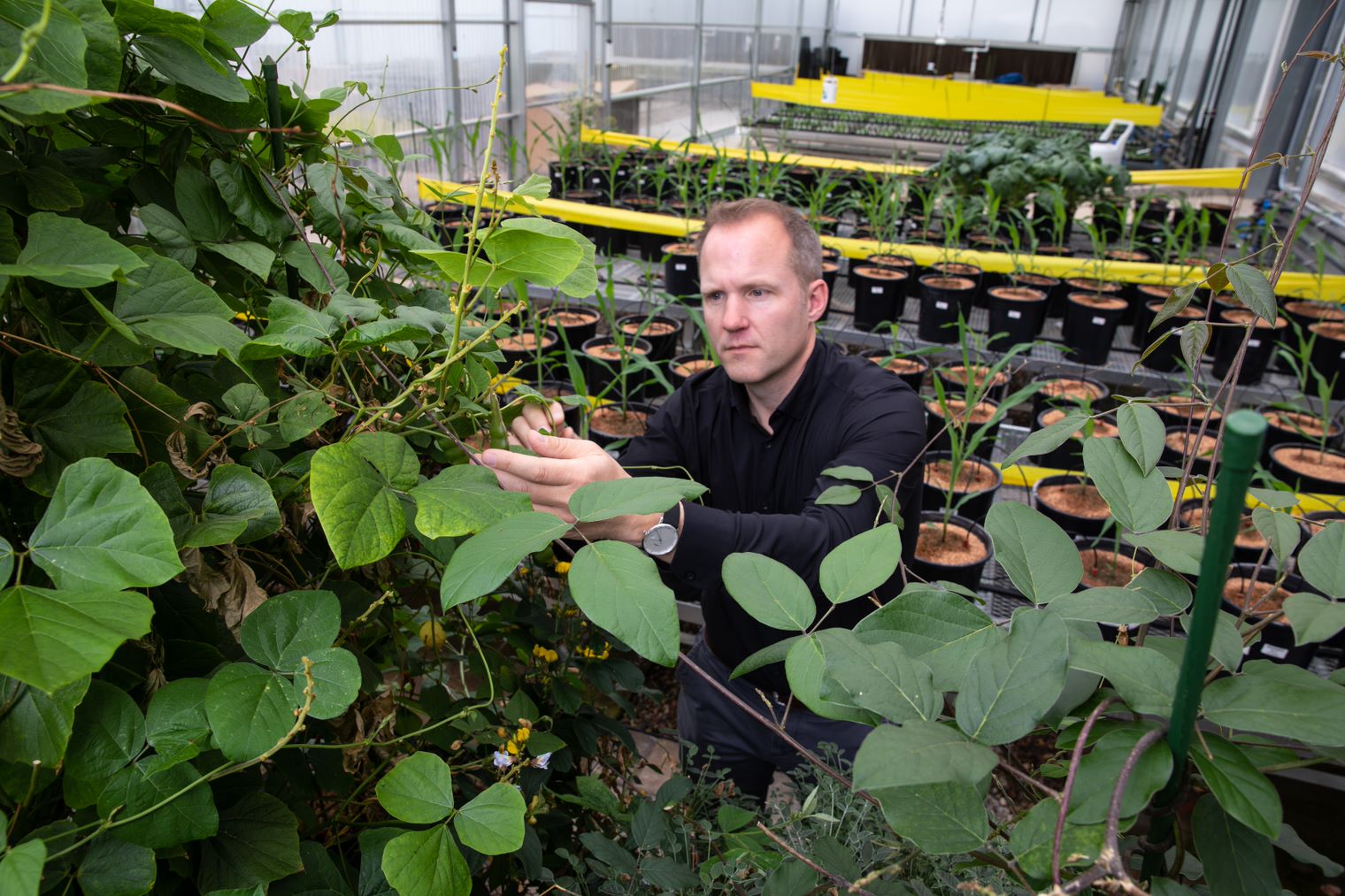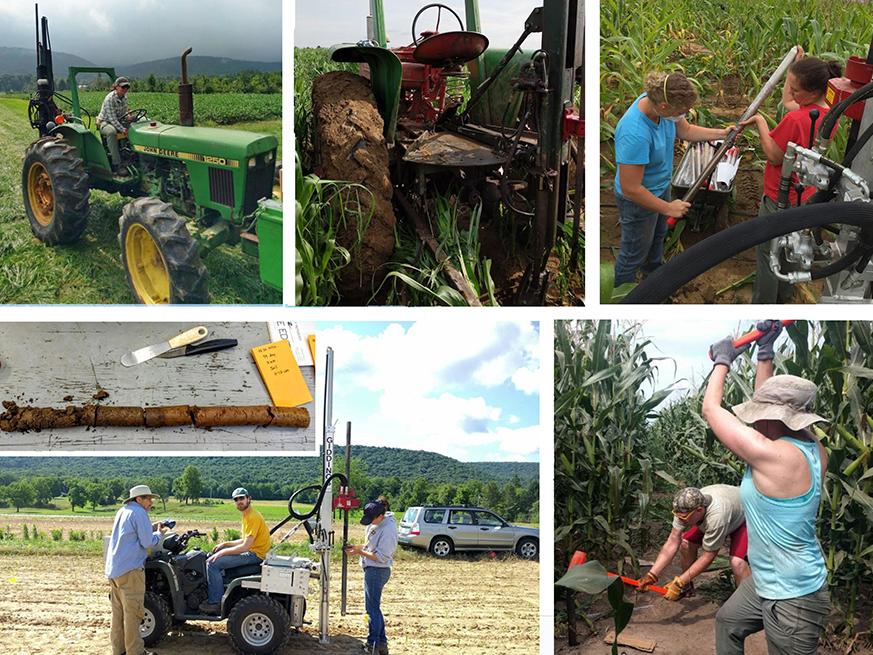The CO2 Removal on a Planetary Scale (CRoPS) program at the Salk Institute for Biological Studies is developing crops to sequester carbon.
“Six years ago, all the professors in plant biology at the Salk Institute decided we wanted to work on climate change because we thought that was the biggest problem that we currently face,” Wolfgang Busch, executive director of Harnessing Plants Initiative at the Salk Institute of Biological Studies in La Jolla, California, says. “We obviously knew that plants are great at capturing carbon dioxide from the air through the process of photosynthesis and we started to think [about] what we could change in plants to make them better at storing more of this captured carbon dioxide for longer.”
With modern genetic technologies, the team at the Salk Institute knew that they could alter plant traits that would allow them to alter how carbon is stored. They chose the root system because if they increase carbon in the root, it could be transferred to the soil and held longer out of the atmosphere.
“Over time, plants have built a carbon reservoir in the soil that is two to three times bigger than the entire carbon store in the atmosphere,” Busch says.
Studies showed that carbon in root material is five times more likely to stay in the soil than carbon derived from the shoot or leaves.
The team identified three traits to work on:
- Root biomass – 40% of the dry biomass of roots is carbon. Increasing root biomass means more carbon potentially stored longer term in the soil.
- Root depth – increased depth means decreased microbial activity. Microbes decompose raw materials, so the deeper the roots deposit material in the soil, the longer that material can stay there.
- Biochemical composition of root systems – suberin, the main component of cork, also provides a protective barrier for roots of plants. Suberin limits water and nutrient diffusion from the root to the environment. Because it is very hard for microbes to degrade suberin in soil, increased suberin would increase the persistence of carbon in soil.
To have a significant impact in carbon capture, the team not only needed to achieve plant improvements in these three key traits, but they also needed to pursue the changes in the right plants.

“It became obvious to us in order to make a global impact, [we had] to do this in croplands,” Busch says. “There are distribution and seed genetics improvement systems through breeding, ag companies and NGOs that already are involved in changing traits and bringing that to the farmer. The scale of agriculture is just so enormous that by focusing only on a small number of plant species used in agriculture, you can make a huge impact in drawing down and storing carbon.”
The team focused on some of the highest acreage crops. In each crop, they attempted to discover associated genes and mechanisms that would allow them to change these desired traits.
They also utilized a technique known as genome wide association studies. This method involves measuring root depth, root mass and suberin in many varieties of a crop. They then identify the genetic variants within these crops associated with the desired traits.
To date, the tam has worked through hundreds of lines of soybean as well as looking at rice, wheat, canola and sorghum varieties. They also have access to data from corn.
Results are promising: the team has found capacity for increasing root mass, increasing suberin, and attaining much greater root depth.
Ultimately, the traits will be altered using genetic engineering, gene editing, or in cases where the traits already exist in crop varieties, advanced genome assisted breeding. The resulting varieties will be known as Salk Ideal Plants.
Under controlled conditions, there has no evidence to suggest that enhancing crops’ carbon sequestration capacity will lead to a decrease in yield. However, field testing will be key to finding the sweet spot between carbon sequestering traits and yield in differing growing conditions.
Salk’s researchers have already generated crop varieties using gene editing of the most promising candidates. Still ahead is significant field research to examine whether lab and greenhouse results persist in the field, together with extensive soil sampling to determine the effect these root traits have on soil carbon accumulation over time.
“This is ongoing and will take a couple of years more to get to good, solid data because working in the field always takes a number of seasons,” Busch says.
Academia can only take this so far, and the Salk Institute has accounted for this reality.
“We (set up) a company recently, and this company will take on some of our technology and move it into varieties of these crops plants so we can start partnering with larger companies to see whether this can already be put in their pipeline,” Busch says.
The company will also find ways to connect these roots’ traits to the carbon markets to ensure that farmers planting Salk Ideal Plants and sequestering carbon will get appropriate carbon credits and compensation.
“It is really time to start thinking about ways to leverage plants to store and sequester carbon because agriculture is the most scalable system on earth,” said Busch. “With the technology in place, it can have a global impact faster than if you have to build factories that try to suck carbon dioxide out of the atmosphere.”













